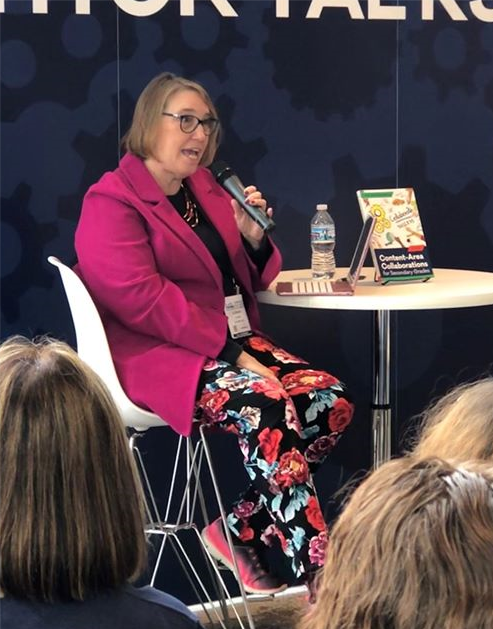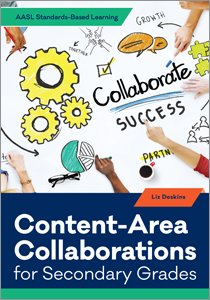An interview with Liz Deskins about AASL’s guide to content-area collaborations for secondary grades
A school librarian for 30 years, Liz Deskins is an adjunct professor for Kent State University as well as a very active speaker and presenter. She's also written several books, including (with co-author Christina Dorr) 2018's best-selling LGBTQAI+ Books for Children and Teens: Providing a Window for All. We had such a great time interviewing her for that book that speaking with her again about Content-Area Collaborations for Secondary Grades, her newest title, felt like a no-brainer. The book uses the AASL Standards Framework for Learners to demonstrate ways to collaboratively plan personalized learning experiences with content-area educators, and incorporates contributions from secondary school librarians across the country. In this interview we discuss how she came onboard the project, tips for successful collaboration, and what she misses most about being a school librarian.
How did you first become involved in this project?
I’ve been passionate about the new AASL National School Library Standards since their inception and being asked to write this gave me an opportunity to really dive into them and create unit/lesson ideas that will provide support and ideas to secondary school librarians.
Did you take a special approach to finding contributions from so many school librarians across the country?
 Membership in AASL has allowed me to make connections across the country. So, in addition to contacting school librarians in my state that I knew would design awesome lessons, I connected with people I respected from my AASL world. Some were able to participate while others connected me to great school librarians who were happy to contribute.
Membership in AASL has allowed me to make connections across the country. So, in addition to contacting school librarians in my state that I knew would design awesome lessons, I connected with people I respected from my AASL world. Some were able to participate while others connected me to great school librarians who were happy to contribute.
The units included in the book are all tailored to foster collaboration. What are some tips for educators who want to approach content area educators with collaboration ideas?
Sometimes it is best to start small. Greeting someone with “I’ve got a great idea for a unit we can do; it will only take 4 weeks!” can be off-putting. Instead begin by building a relationship first. Offer small things to support them with their curriculum — search for great resources, offer to teach and grade works cited pages, or work one on one to bring a lagging student up to date with their research. After success with these things,  find a time you can sit down to discuss ways to meet both your curriculums.
find a time you can sit down to discuss ways to meet both your curriculums.
“Diversity, Acceptance, and Pride” is one of the units in your chapter on the Shared Foundation of Include. Could you talk a little bit about addressing this Foundation in a secondary school setting?
One of the primary ideas in this Foundation is empathy. In talking with the contributor for this unit, I explained how strongly I felt that inclusion means so many things, but that the students in the margins often get ignored. I watched my LGBT students skirt through their days, many not wanting to draw attention to themselves because of possible negative reactions. She felt the same way and designed this exceptional unit.
You were a school librarian for thirty years—what do you miss the most?
My students! I looked forward every morning to watch them come to the library, some happy, others sad and I always found the time to chat with them to make sure they knew someone cared. Of course, that moment when someone would come in and say, “This is the first book I read all the way through, can you help me find another?” was also a great event in my daily school life.
Learn more at the ALA Store.
